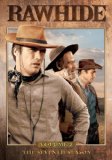| Reviews & Columns |
|
Reviews DVD TV on DVD Blu-ray 4K UHD International DVDs In Theaters Reviews by Studio Video Games Features Collector Series DVDs Easter Egg Database Interviews DVD Talk Radio Feature Articles Columns Anime Talk DVD Savant Horror DVDs The M.O.D. Squad Art House HD Talk Silent DVD
|
DVD Talk Forum |
|
|
| Resources |
|
DVD Price Search Customer Service #'s RCE Info Links |
|
Columns
|
|
|
Rawhide: The Seventh Season, Volume 2
Reviewer's note: CBS DVD and Paramount have released Rawhide's seventh season in two separate volumes (you can read my Volume 1 review at the link). Since I received these volumes separately, I'll review them as such, with a shared overall take on this penultimate--and schizophrenic--season, and episode reviews specific to each volume.
The cattle drive's rather startling excursion into dark, arty territory is eventually detoured into far more conventional terrain. CBS DVD and Paramount have released Rawhide: The Seventh Season, Volume 2, a four-disc, 15-episode collection that represents the long-running CBS Western's 1964-1965 season's second half. Starring Eric Fleming (his last season on the series before he was unceremoniously canned), Clint Eastwood, Paul Brinegar, James Murdock, Steve Raines, Rocky Shahan (and in volume two, Sheb Wooley and Robert Cabal), Rawhide by this stage of the game was floundering badly in the ratings, the victim of too much format tinkering and just plain repetition. A bold move this season to save the show, courtesy of two new producers, jolts the oater to attention and results in some terrific, series-best episodes...but it was for naught in terms of ratings, with the format unfortunately yanked back onto safe, humdrum ground before the season concluded. A real shame. No extras for these super-sharp fullscreen black and white transfers.
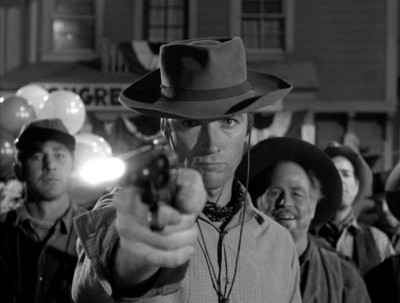
North Texas, a few years after the War Between the States. Sometimes patient, sometimes understanding, but mostly pissed-off and always driving, driving, tough-as-nails trail boss Gil Favor (Eric Fleming), has 3,000 head of cattle to get to Sedalia, Missouri, and he hasn't got time to screw around with drovers who can't cut it out on the newer Chisum trail. High-spirited, handsome "ramrod," Rowdy Yates (Clint Eastwood), is second-in-command; always grumbling, comical G.W. Wishbone (Paul Brinegar), is the chuck wagon cook; stalwart rough riders Jim Quince and Joe Scarlett (Steve Raines and Rocky Shahan) are drovers for the run (...and later this season, familiar drovers Pete Nolan and Hey Soos, played by Sheb Wooley and Robert Cabal, sporadically return); and poor, dim-witted "Mushy" Mushgrove (James Murdock), the young, not too bright kid of the group, helps out Wishbone with the cooking and cleaning and doctoring. Fighting the elements every step of their journey, including bad grassland, storms, mountainous passages and killing heat and drought, Gil's team encounter obstacles not just from nature, but from the human landscape, as well, as they deal with the problems of the people they encounter out on the trail.
I've written numerous times about Rawhide over the last seven (!) years, with the last time I had a complete season to watch and review being season two (as opposed to the usual frustrating Rawhide situation for me, where parts of seasons or whole years inexplicably bypass us here at DVDTalk). Good thing I had both volumes of season seven this time, because its chaotic shift in tone over these 30 episodes would have been difficult to properly assess had one or the other volume failed to show up. Dedicated fans of Rawhide know that the series had an increasingly troubled production as it wore on from 1959 to 1966 (six full seasons, with half-seasons opening and closing the show), with seemingly endless fiddlings with the format, producers, and cast doing nothing to keep Rawhide from its continual fall in the ratings after its third season high-point of 8th in the Nielsen's. Those first three years were shepherded by the series' creator, Charles Marquis Warren, a gifted producer and writer who also initially guided arguably television's greatest Western series, Gunsmoke. When Warren left Rawhide, producers Endre Bohem and Vincent M. Fennelly were brought in for subsequent seasons, neither of whom could staunch Rawhide's ratings' bleed (prior to this seventh season, Rawhide had finally dropped out of the coveted Nielsen Top Thirty during the 1963-1964 television year).
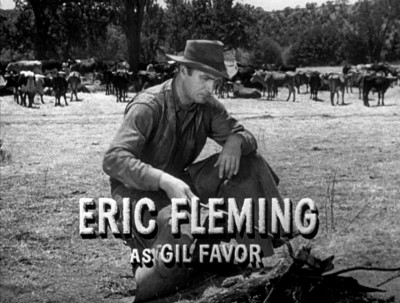
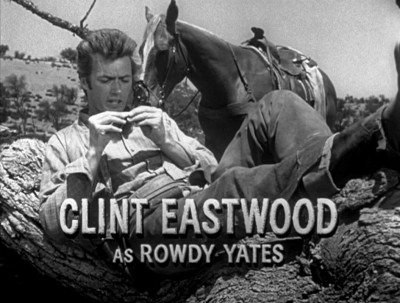
For this seventh season, producer/director Bernard L. Kowalski (Night of the Blood Beast, Krakatoa: East of Java, Macho Callahan, the wonderful exploiter, Sssssss) and writer/producer Bruce Geller (Zane Grey Theater, Have Gun, Will Travel, The Rifleman, as well as creating Mission: Impossible, and directing the fine Harry in Your Pocket) were brought on board, resulting in an immediate change in Rawhide's look and feel--a self-consciously dark, ominous, even "arty" quality, if you will, to the visuals that generally matched these episodes' more psychologically intense approach. In television or movie production, anytime you're attempting anything more complicated with the camera and the lighting than just plunking them down and shooting everything square in the middle of the frame, it's going to take more time to achieve what you're aiming for...and more production time invariably means more money spent. So it's not surprising that CBS, looking at Rawhide's still-hemorrhaging viewer numbers, would pull the plug on Kowalski and Geller before this seventh season even ended, bringing back plodding Endre Bohem (The Redhead and the Cowboy, The Night Has a Thousand Eyes, as well as the Robert Benchley and Passing Parade short subject series) as producer for the remaining nine episodes. From an aesthetic viewpoint, Bohem's episodes are like night and day compared to K & G's episodes: relatively flat, A-B-C lighting, directing, and editing, with an unmistakably (and not flattering by comparison) old-fashioned look and feel to them that comes into even starker contrast when seen next to the flashy, intriguing, more visually and thematically complex K & G efforts. Bohem brings back Sheb Wooley and Robert Cabal, and sticks closer to events out on the range, to further convince viewers this is the old Rawhide again...but clearly this shift is a step backwards for the series, and yet one more stylistic change that must have thoroughly confused the show's remaining viewers--viewers who by 1964 were increasingly tuning into sitcoms rather than the dwindling number of network oaters.
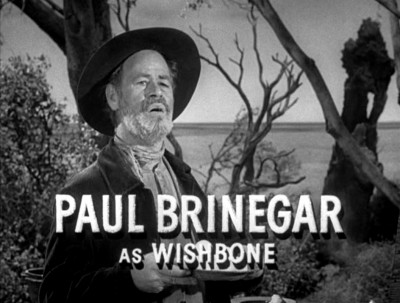
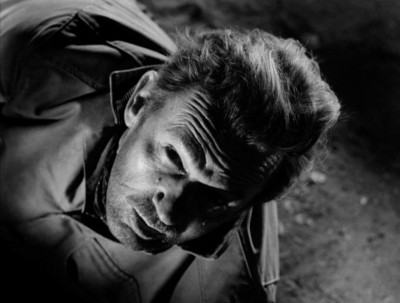
First up for this second volume of Rawhide's seventh season is scripter Sy Salkowitz's A Time for Waiting, which premiered January 22, 1965 (just to orient you to this second volume's timeline). Directed by Charles Rondeau (we're still with the G & K episodes at this point), this "cavalry fort under seige" episode is a mournful outing concerned less with the Indians massing outside the walls than with convicted murderer George Grizzard's desperate efforts to enlist friend Rowdy in helping prove he's innocent. Grizzard is perfect for this kind of role, while Lisabeth Hush does a nice job as a widow who's interested in revenge. The ending is an interesting twist on where we think this was going. For some unknown reason, the otherwise excellent Moment in the Sun comes perilously close to being completely ruined whenever that stupid goddamned narrative folk song warbles up, like some ersatz High Noon. Otherwise, writer/director Bernard Girard delivers some intriguing, complicated character motivations in this story of the cattle drive getting caught in the middle of has-been sheriff Gene Evans's efforts to single-handedly run-in phony Robin Hood outlaw Pat Conway. A tough, cynical outing, with sexy Sherry Jackson a highlight, turning on little creep Billy Gray (very good...and a long way from Father Knows Best's Bud) before she laughs in his face ("You are a loony kid!" she sneers).
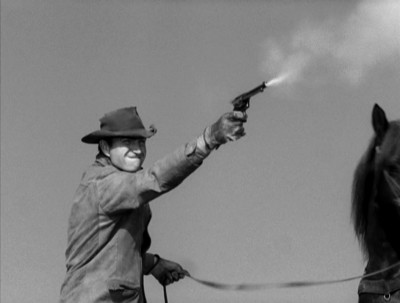
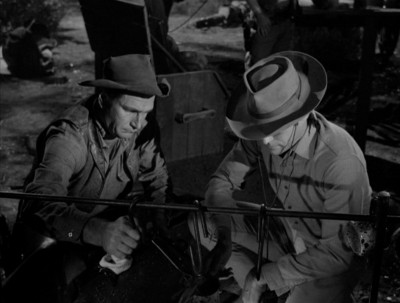
February 5th, 1965's Texas Fever marks the first seventh season Rawhide episode aired under returning producer Endre Bohem's guiding hand. For the rest of the season, his further eight episodes would be interspersed with the remaining Geller's and Kowalski's to finish out the season. Now, just to be clear: there's nothing really terrible about Bohem's outings; Texas Fever, for example, is a perfectly straightforward oater that should satisfy the most basic requirements for lovers of the genre. However, his staid, literal, and by this point for TV Westerns, outdated approach to the material, looks deadly next to a typical G & K episode. Sure it's nice to see Sheb Wooley's quiet, authoritative Pete Nolan, and Robert Cabal's warm, sympathetic Hey Soos, come back for the ride. But clearly Bohem's approach was for his writers and directors to get in and get out as quickly as they could with each story, with the results being respectable...but hardly memorable. With Walter Black's Blood Harvest, only some good acting from Steve Forrest and Tom Tully save this overly-familiar story of a son-gone-bad reuniting with his crusty father, from disappearing altogether. No better is another Bohem effort, The Violent Land, scripted by Buckley Angell and directed by Harmon Jones. Rehashing already tired cliches about Whites being captured by Indians at a young age, The Violent Land does more back flips than a gymnast to keep things even-steven here in the morality department (with some questionable rationalizations, like Indians were justified in keeping White slaves...before the episode tries to say they weren't really slaves after all). The script doesn't even do anything with the barely-mentioned subplot of Rowdy loosing his sister and her family to an Indian raid--why include this kind of significant character definition, and then do absolutely nothing significant with it?
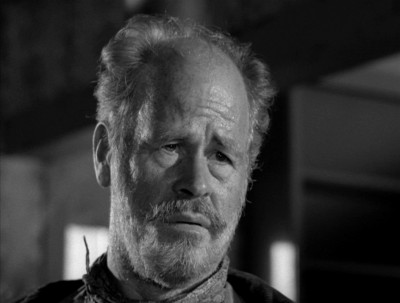
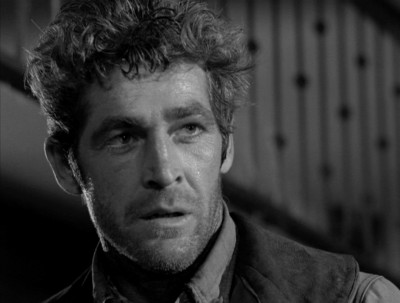
Robert Blake's stand-out performance is the whole show in John Dunkel's The Winter Soldier, where Blake (far too often underrated) excels in an otherwise predictable outing about an Army deserter scamming his way across the West (if he wasn't nominated for an Emmy here, he should have been). It's nice to see Paul Brinegar get more than some throwaway comedic reaction shots in Prairie Fire, where Wishbone is taken prisoner by some cattle rustlers. The story isn't much, but Brinegar gets to stretch beyond his usual fussy retorts, and he's quite good. Fine supporting cast in this one, including Michael Conrad, Anthony Caruso (one of my favorite bad men), and Hal Baylor. With Retreat, we're back with Geller and Kowalski, and the rise in dramatic intensity is immediately noticeable in this solid outing about a once-falsely disgraced Army major (the always excellent John Anderson) who decides to retire with his fort's payroll...before he finds out he's due for a pardon and a promotion. Another unsung character actor from the 1960s, Steve Ihnat, puts in one of his usual quirky, intriguing turns here. James Goldstone directs with a steady pull. Back to Bohem with The Empty Sleeve, one of the producer's better efforts in this tense outing that has one-armed Burt Douglas dealing with a heavy burden from his past, while Gil tries to figure out why his thirsty, dying beeves won't drink any water. Polished supporting work from old pro Everett Sloane here (always good playing a cold bastard), but Dick Davalos had to be wincing at taking on a role that seemed like yet another mutation of East of Eden.
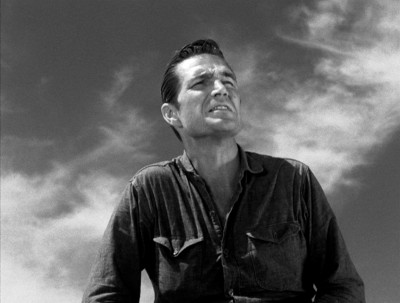
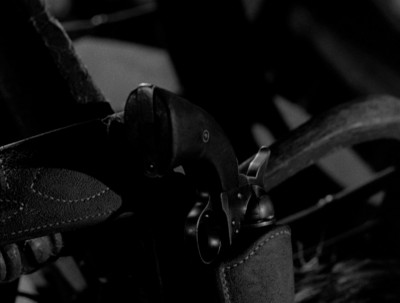
The Last Order is another square, distressingly familiar Bohem-produced episode that offers little new in its story of a struggle over a strongbox that involves the Rawhide drovers (guest star Efrem Zimbalist, Jr. does what he can with an essentially nothing role). G & K's Mrs. Harmon is a moody, beautifully-shot episode that finds Wishbone (Binegar again given something to really sink his teeth into) caring for an abused wife and mother. When Barbara Barrie shoots her drunken husband, Wishbone takes the rap (Binegar is quite touching when he's called on to be a temporary father for Barrie's kids). Eastwood, going it alone this time without Fleming, always seems so much more assured in these G & K outings. In The Calf Women, Eastwood gives an early sign of how well in the future he would play off strong, talented actresses, when he pairs up here with Julie Harris, playing a role she did often--the distrustful, emotionally needy spinster who has her head romantically turned...to a bad end--but one she always expertly essayed. Good dialogue for the couple from Lou Vittes and Buckley Angell. The Spanish Camp would have benefitted from focusing more on Brock Peters' intelligent, crafty character who continually out-smarts Gil, than the more familiar "obsessed archeologist" character John Ireland plays (another favorite, but he doesn't have much to work with here).
Finally, two superlative Geller and Kowalski episodes end the season...as well as feature Eric Flemings' final series appearances. El Hombre Bravo, from Herman Groves and director Philip Leacock, feels like a long-lost Sam Peckinpah oater as Gil has to shepherd a small group of children and their school teacher (Frank Silvera, in a touching performance), while warring factions Malachi Throne and Henry Corden search for the mythical "El Hombre Bravo"...about whom Silvera may know something more than just the popular fairytales that are told. Odd little moments (Gil's uncomprehending first sight of the children being led through the desert), and the stirring, resonant finale, mark this as one of the series' best (Fleming in particular is excellent here). Lastly, the outlandish The Gray Rock Hotel, from scripter Jack Curtis and director Stuart Rosenberg, sees the vastly underestimated Lola Albright turn in a tour de force performance as a deadly, charming, psychotic siren who seems to exist only to destroy our four main principle characters, as well as guest Steven Hill and Strother Martin. Shot like a bizarre, waking nightmare (the baroque framing and the expressionistic lighting only further add an otherworldly obsessiveness to this rococo psychological drama), The Gray Rock Hotel is precisely the kind of episode that could have taken Rawhide in a new, exciting, relevant direction, had CBS stuck with this "arty," psychologically-driven aesthetic. A fatally wounded Rawhide would limp into an abbreviated 1965-1966 season, sans Fleming--an ignominious end to what was once one of the most insightful and exciting Western dramas on television.
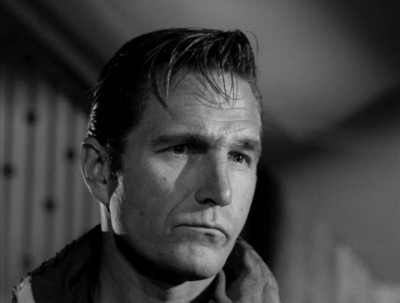
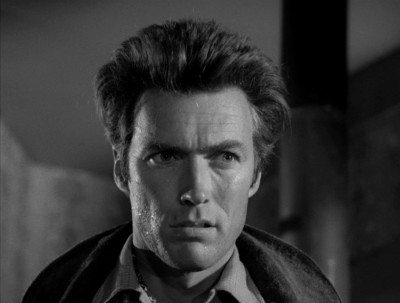
The Video:
As is usually the case with these Rawhide releases, the fullscreen, 1.37:1 black and white transfers for Rawhide: The Seventh Season, Volume 2 look quite sharp, with solid blacks, reasonable contrast (sometimes a tad hot in spots), and few screen imperfections. Not bad at all.
The Audio:
The Dolby Digital English mono audio track is serviceable, with low hiss and no subtitles or closed-captions available.
The Extras:
No extras for Rawhide: The Seventh Season, Volume 2.
Final Thoughts:
Still enough of the Geller and Kowalskis to highly recommend this volume. Had CBS stuck with G & K's arty aesthetic...Rawhide still probably would have been canceled the next year. But at least we would have had a few more of their series-best efforts. The wonderfully grotesque The Gray Rock Hotel is worth the price of admission alone here, so you won't go wrong picking this one up. I'm highly recommending Rawhide: The Seventh Season, Volume 2.
Paul Mavis is an internationally published movie and television historian, a member of the Online Film Critics Society, and the author of The Espionage Filmography.


|
| Popular Reviews |
| Sponsored Links |
|
|
| Sponsored Links |
|
|
| Release List | Reviews | Shop | Newsletter | Forum | DVD Giveaways | Blu-Ray | Advertise |
|
Copyright 2024 DVDTalk.com All Rights Reserved. Legal Info, Privacy Policy, Terms of Use,
Manage Preferences,
Your Privacy Choices | |||||||









